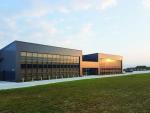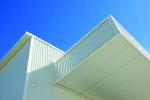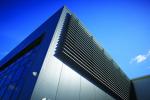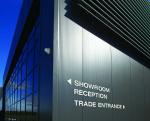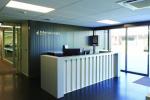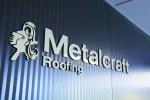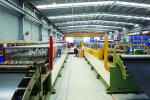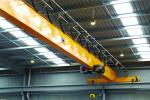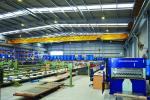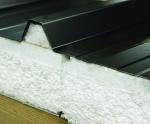Metalcraft’s New Hamilton Facility
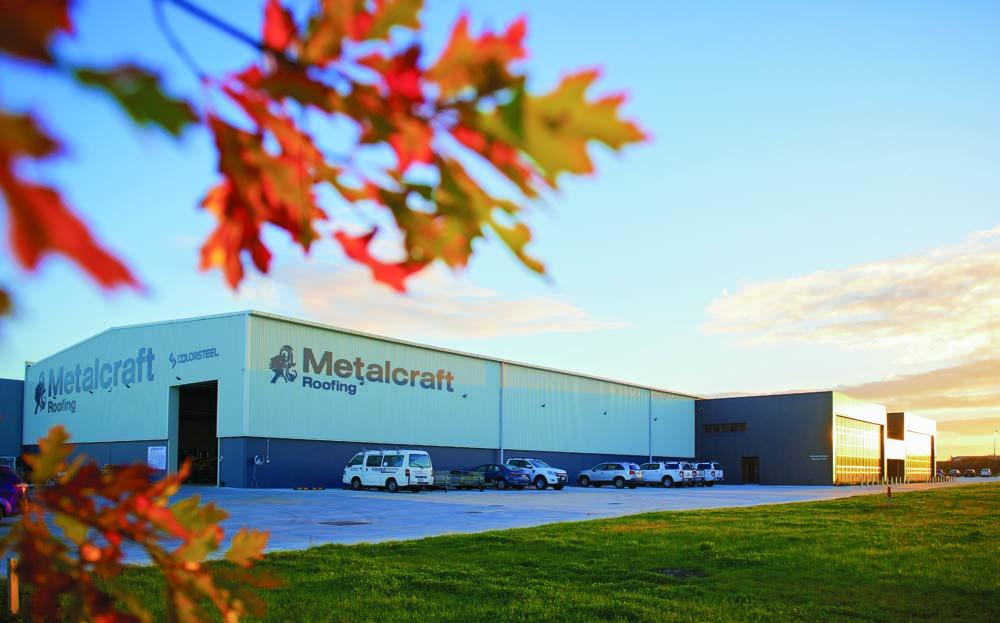
Metalcraft Hamilton needed a bigger factory to deal with increased demand and provide them with an increased ability to produce longrun cladding, including Metalcraft’s new Kāhu® and Metcom 965 profiles.
“We grew to the point where we could not manufacture and store stock safely,” says Robert McLennan, Branch manager – Metalcraft Roofing Hamilton.
Parent company UIL (United Industries Limited) purchased new vacant industrial land and engaged John Latimer from Code Design to prepare plans for the new roofing factory with an option for future development.
The existing Hamilton factory was sold and Metalcraft stayed on as a tenant until the new factory was built.
John Latimer from Code Design, Manukau, was appointed engineer for the contract. He provided technical assistance throughout and controlled the build process format under NZS3910 Condition of Contract.
This was not John’s first project for UIL. He previously designed the Auckland factory for Metalcraft Insulated Panels in Roscommon road, Wiri, and is working on further design projects for the company.
“With the sale of the old factory, it became urgent to provide design sketches for the replacement facility,” said John Latimer. “The initial brief was to increase the production line by having the widest practical factory, allowing for future development on the remaining site. ”Site conditions in early 2018 delayed the build. It required some structural design, but once it was approved the build went ahead as planned, adding small variations as requested by UIL.
“During the design it became quite apparent that Arthur Porter drive is a very narrow drive and it has a massive swale right through the centre of it.” No 14 m flatbed truck would be able to turn into any property off Arthur Porter drive.
John says the back road, which is now Earthmover Crescent, was unformed and unnamed. “We presumed it would be almost a cul-de-sac.” Now it has become the main thoroughfare; it is a very wide road that gives access to all the industrial properties.
The roading forced the team to redesign the layout. There was no point in having the office complex at the front, in Arthur Porter drive, where nobody would see it. Putting it at the rear was not an option because that is the location and access for despatch. The solution was to locate the office on the side of the building.
“We increased the size of the site to accommodate the future development of a second factory.The office building was designed and built to accommodate both the roofing factory and any future development. The group company (UIL) has a number of compatible businesses and building supply manufacturers who could occupy the space.
Hamilton manager Robert says, “[the larger factory] allowed us to put in a new rollforming machine, which will allow us to get involved in larger commercial projects.”
The new rollforming machine enables Metalcraft, Hamilton, to manufacture Metcom 965 and Kāhu® roofing and cladding. “With the introduction of these two profiles we expect a significant increase in output. We will now be able to run maximum transportable lengths of longrun products from this facility,”
The brief from UIL required the office to be separated from the factory to mitigate vibration from the two gantry cranes. The double story office building is sandwiched to the side of the factory with nothing structurally connecting them. All the staffing facilities such as admin and management were put on the ground floor. It also serves as the main office entry, with a product display in the foyer.
The mezzanine floor accommodates the kitchen, cafeteria, toilets, social area, a boardroom, training room, and meeting room.
Robert and his staff are already at home in the new office building. “People are an important asset in roofing manufacturing. We work on short time frames, orders come in and customers expect a fast response. The new set-up allows administrative staff to be in close contact with the production line,” he says. “And being able to do so while being removed from the factory noise is a luxury.”
The office space takes up about 1000 m².
“My intension was to showcase Metalcraft’s products with this particular build, and for that reason, I selected the Thermopanel for the wall cladding and Thermospan for the roofing,” John Latimer said.
Thermopanel EPS 200mm thick in Grey Friars silkline exterior with Titania flat used on the interior of the building and the panel lining was left exposed.
Thermospan EPS 150mm thick Titania was used on the roof of the office building with an IGU curtain wall glazing along the office side wall. It achieved R5.25 wall and R3.95 roof insulation ratings.
Metalcraft Insulated Panels occupy an office and dedicated insulated panel showroom out of the same Hamilton building run by Terry Stevenson, who has been in building related industries for over 40 years.
As a proven building product insulated panels offer a realistic building alternative to a wide range of applications. Thermopanel is used in a host of applications including commercial coolrooms and freezers, but also the likes of factories, transportable homes, enclosed transport trailers, commercial kennels, portacom buildings, machinery rooms, clean rooms, wineries, honey extraction rooms, extra office space, small and large sheds, to entire Codemark accredited houses and even Rocketlab buildings. The uses are vast and varied.
Thermospan insulated roof panels are a very popular commercial and residential Codemark accredited roof alternative where architect designs require purlin spans to 6.0 metres or more, which of course depend on the thickness of the insulated panels and local wind zones. Residential builders are always impressed by the speed of roof construction as each panel (roof, insulation and ceiling) is laid compared to traditional methods encompassing many elements. 50mm to 250mm thick Thermopanel and Thermospan insulated panels use a fire retardant expanded polystyrene (EPS) inner covered with 0.59mm COLORSTEEL® on each side.
Another popular alternative Metalcraft Insulated Panels offer are PIR insulated flat and roof panels which provide a higher R value and greater fire resistance.
Architects and specifiers will do well to include these building products in their tool kit where large spans, high R values or speedy build times are required. John says, “It offered the opportunity to demonstrate the use of insulated panels as an interesting option for industrial building cladding and roofing, with the added advantage of thermal and some acoustic insulating properties. It is a good, versatile product.”
Both the factory and office buildings were designed for energy efficiency. Robert says the lighting comes from high-quality LED lights and the centralised air conditioning helps to create a comfortable interior atmosphere. ”We are working towards getting solar panels approved to power the daytime lighting and air conditioning.”
The structural engineer achieved fire separation between the factory and other buildings by designing a full height pre-cast concrete panel wall for the factory boundary wall, with seismic separation between the factory and the office building. The ends and other side wall were designed for a 2.5 m pre-cast base wall with metal cladding above. The structural engineers designed the steel portal to clear span 30 metres and accommodate two 5-ton gantry cranes for the full 97-metre shop length.
The factory needed to have sufficient steel coil storage and the Arthur Porter drive-end and product flow through the rollforming machines to sorting and stacking at the other end. Despatch, also at the other end needed 3 — 5 m wide doors under a cantilevered roof canopy.
All the purlins and girts were from the Metalcraft Super Span (MSS) range, and UIL specified the Metalcraft Kāhu®-profile for the factory cladding.Kāhu®, a new symmetrical trapezoidal profile, is designed for roofs with a minimum pitch of 3° and can be used for either roof or wall cladding. It features a double capillary overlap which provides good weather performance.
Latimer specified COLORSTEEL® Titania in the Kāhu® profile for the wall cladding and Metcom 930 0.55 BMT COLORSTEEL® ENDURA® for the roofing. The main factory floor had an anti-dust additive mixed with the concrete and an internal drain channel across the despatch end. “Foster Construction secured the contract, and their performance allowed the contract to be completed on time which allowed Metalcraft Hamilton to occupy the building over 2018/2019 Christmas period,” says John.

